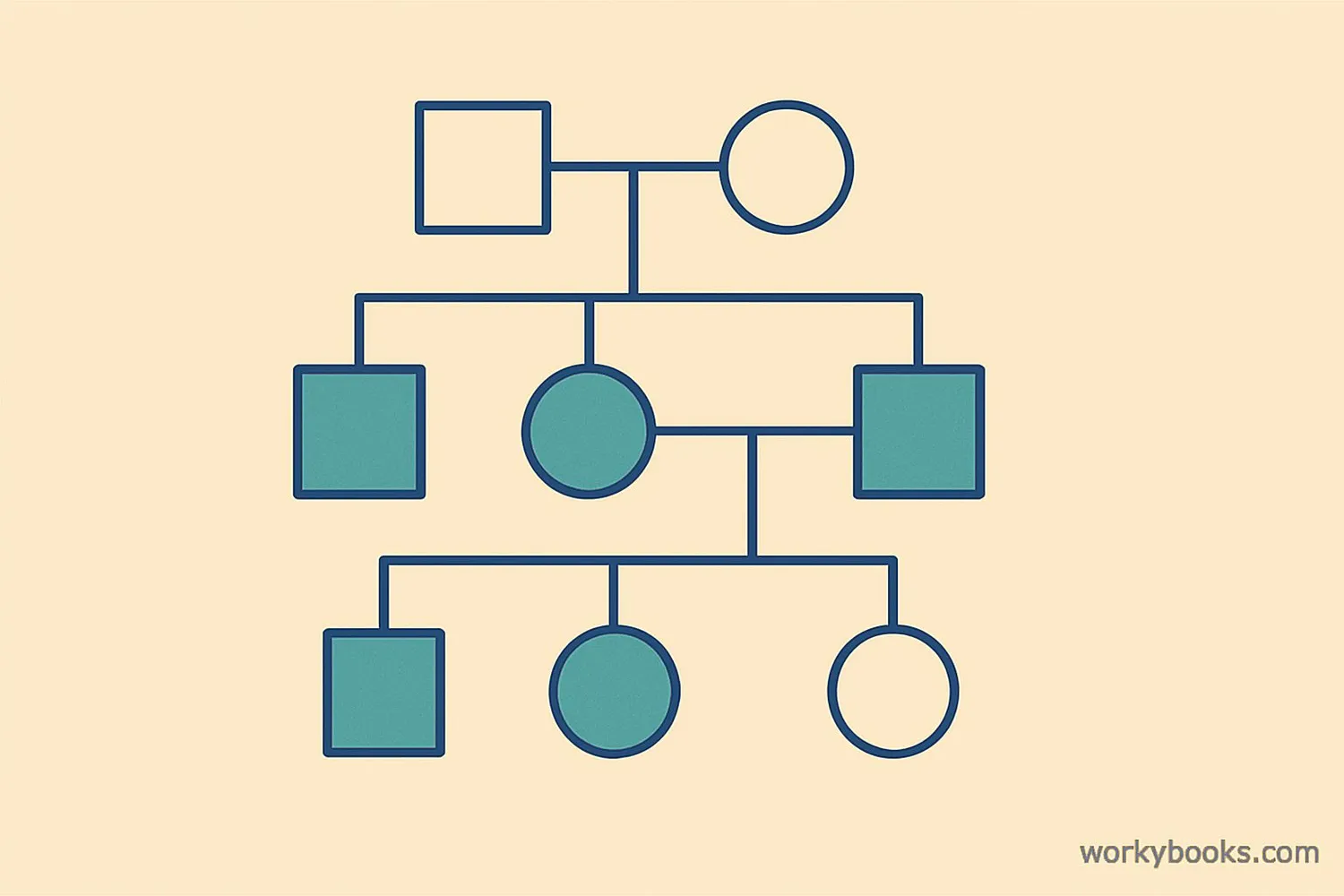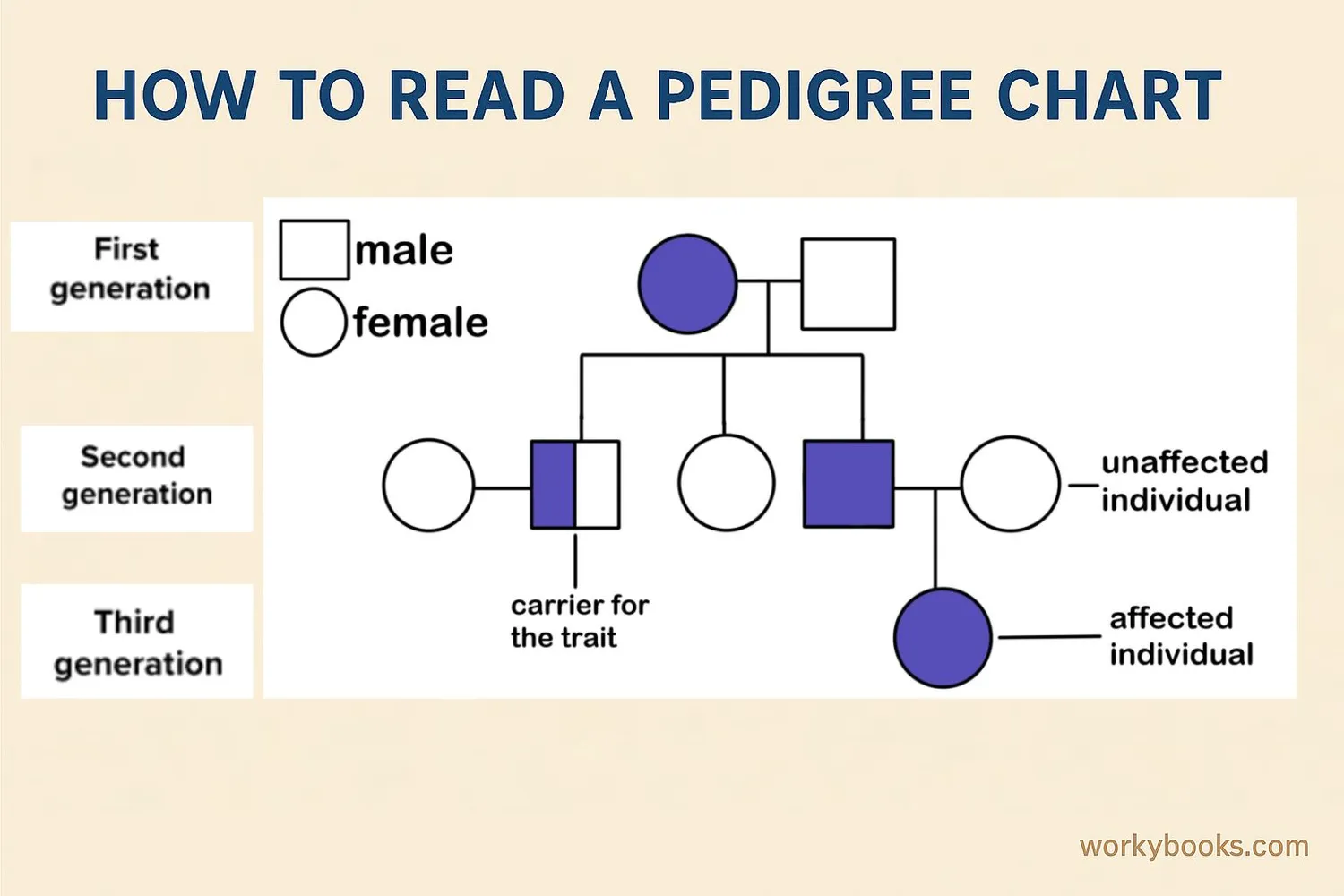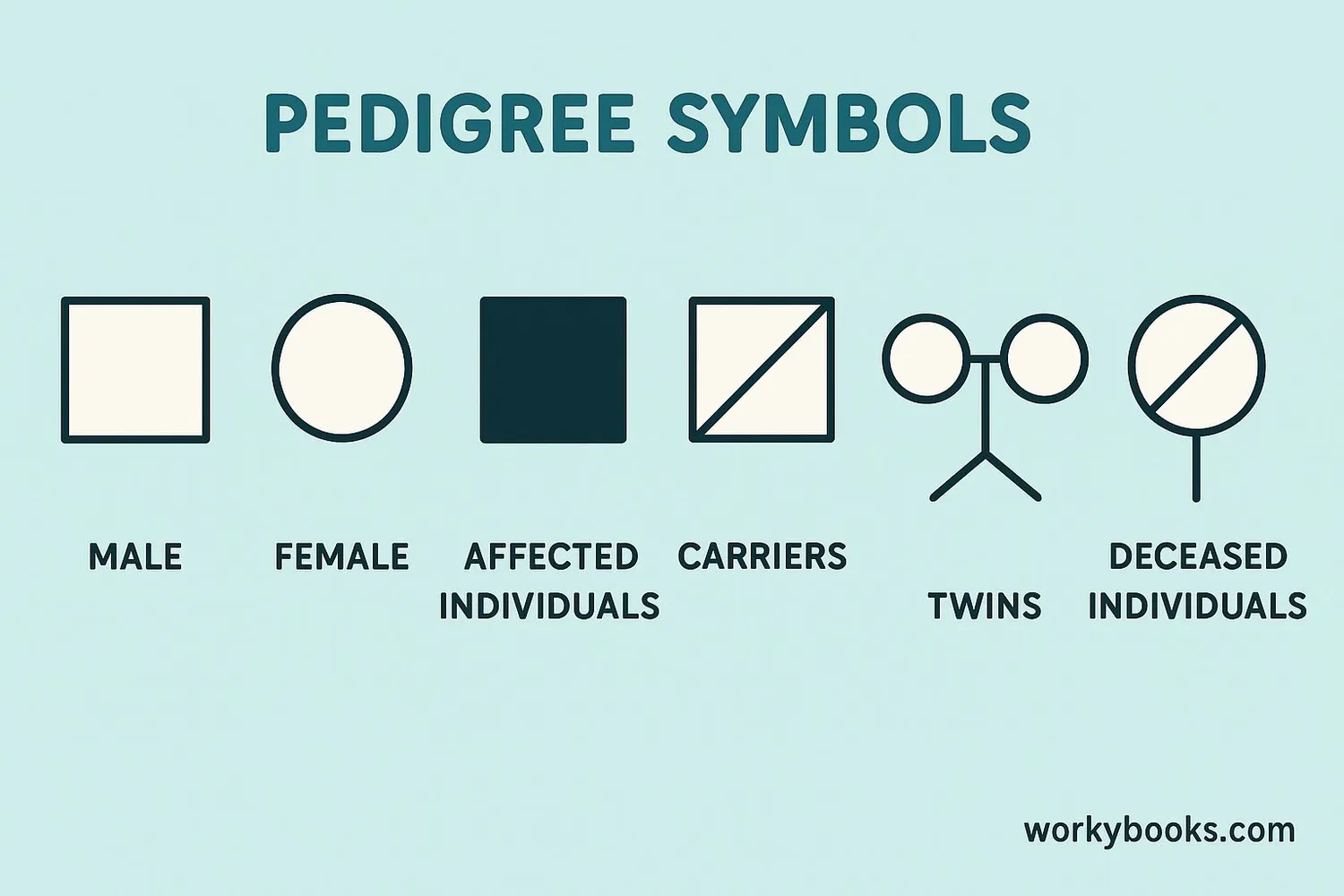Pedigree Charts - Definition, Examples, Quiz, FAQ, Trivia
Learn how scientists track genetic traits through generations
What is a Pedigree Chart?

A pedigree chart is a special diagram that shows how genetic traits are passed down through generations in a family. It's like a family tree that focuses on specific characteristics or health conditions that might run in families.
Scientists use pedigree charts to study how traits are inherited from parents to children. These charts help them understand whether a trait is dominant or recessive, and whether it might be linked to the X or Y chromosome. Pedigree charts are especially helpful for genetic counselors who work with families to understand their genetic health.
Did You Know?
The word "pedigree" comes from the French "pied de grue" meaning "crane's foot," because the branching lines of early pedigrees resembled a crane's foot!
How to Read a Pedigree Chart

Reading a pedigree chart might seem tricky at first, but once you understand the basic rules, it becomes much easier! Here's how to interpret these special charts:
Generations
Each row represents a different generation, numbered with Roman numerals (I, II, III)
Individuals
Each person is represented by a shape and usually has a number below it
Relationships
Horizontal lines connect parents, vertical lines connect to children
Traits
Filled shapes show individuals who have the trait being studied
Patterns
Look for patterns to understand how the trait is inherited
When geneticists study a pedigree chart, they look for patterns that help them understand how a trait is passed down. For example, if a trait appears in every generation, it's likely dominant. If it skips generations, it's probably recessive. By carefully analyzing these patterns, scientists can make predictions about which future family members might inherit certain traits.
Pedigree Chart Symbols

Pedigree charts use special symbols to represent different information about family members and their genetic traits. Learning these symbols is like learning a special code that genetic scientists use!
| Symbol | Meaning | Example |
|---|---|---|
| □ | Male | Unfilled square represents a male without the trait |
| ○ | Female | Unfilled circle represents a female without the trait |
| ■ | Affected male | Filled square represents a male with the trait being studied |
| ● | Affected female | Filled circle represents a female with the trait being studied |
| ◐ | Carrier female | Circle with dot in center represents a female who carries but doesn't show a recessive trait |
| = | Marriage/Relationship line | Horizontal line connecting two individuals who are parents |
| | | Offspring line | Vertical line connecting parents to their children |
These standardized symbols allow geneticists all over the world to understand and interpret pedigree charts in the same way. When you know what each symbol means, you can "read" the story of how traits are passed through a family, just like genetic scientists do!
Pedigree Chart Quiz
Test your knowledge about pedigree charts with this quiz! Answer all 5 questions to see how much you've learned.
Frequently Asked Questions
Here are answers to some common questions about pedigree charts:
Fun Pedigree Chart Trivia
Discover some interesting facts about pedigree charts and genetics!
Royal Pedigrees
European royal families have extensive pedigree charts that show how hemophilia (a blood disorder) was passed through Queen Victoria's descendants to royal families across Europe.
Animal Pedigrees
Purebred dogs and cats have pedigree charts that trace their ancestry, helping breeders maintain specific traits and avoid genetic health problems through careful selection.
DNA Connection
Modern genetic testing can now confirm relationships shown in pedigree charts by comparing DNA sequences, sometimes revealing unexpected family connections!
Historical Records
Before modern genetics, pedigree charts were used for animal breeding and to track noble lineages. The oldest known pedigree charts date back over 1,000 years!


